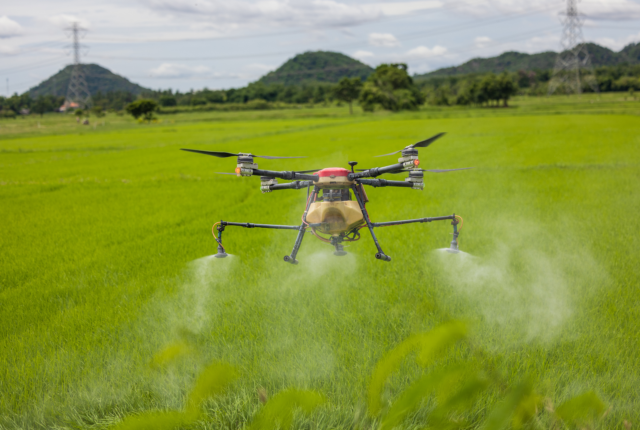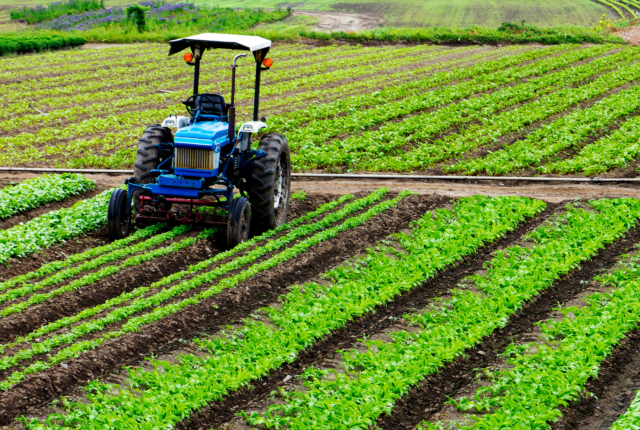The world’s population is expected to reach 9.7 billion people by 2050, which will make a huge increase in the demand for food. There is, therefore, an urgent requirement for environmentally friendly agricultural methods that may simultaneously increase food production and reduce their negative effects on the natural world. The use of AI in agriculture is essential.
By offering data-driven insights, automating procedures, and improving operations, AI can completely upend the agricultural economy. There are many ways in which AI may aid farmers in increasing productivity and efficiency, including precision agriculture and predictive analytics.
Here, we’ll discuss the potential of AI in farming, along with some of the obstacles and restrictions that could prevent it from reaching its full potential. We’ll talk about how AI might change farming in the future and how it might affect future generations’ access to nutritious food.
Precision Agriculture
With the help of modern tools, farmers can collect and analyze data to make more calculated choices regarding their crops and farming methods. It entails keeping an eye on things like crop development, soil health, and weather with the help of sensors and GPS mapping. Increased crop yields and incomes can be achieved through better management of resources through data collection and analysis.
Precision farming has been completely transformed by AI, which now allows farmers to efficiently collect and analyze massive volumes of data. Farmers can monitor crop health and soil conditions, spot early signs of disease or infestation, and alter farming operations with the help of AI-powered sensors and drones. This level of accuracy aids farmers in making informed decisions, which increases crop yields and lessens their negative effects on the environment.
The consumption of water and fertilizers may be reduced and reused more efficiently thanks to precision agriculture enabled by AI. Artificial intelligence can help farmers maximize productivity and minimize waste by determining the precise amount of water and fertilizer their crops require by continuously monitoring soil moisture levels and other environmental parameters. Both the financial and ecological costs of farming are reduced as a result.
Predictive Analytics
Predictive analytics involves the use of historical data, machine learning, and other AI techniques to analyze large amounts of information and identify patterns and trends that can help farmers make better decisions about their crops.
AI-based predictive analytics in agriculture can help farmers optimize their operations and improve their yields. For example, AI can analyze historical weather data to help farmers predict the timing and severity of droughts or other weather events that could impact their crops. By using this information to adjust their planting schedules and crop management practices, farmers can minimize the impact of weather events on their yields.
Another use case for predictive analytics in agriculture is crop yield forecasting. By analyzing data on soil health, weather patterns, and other factors, AI can help farmers predict the potential yield of their crops with a high degree of accuracy. This information can be used to inform crop management decisions and plan for the future.
In addition to crop yield forecasting, AI can also be used to analyze data on pests and diseases that can impact crops. By identifying patterns in data on pest and disease outbreaks, AI can help farmers take proactive measures to prevent or mitigate these issues.
Automation and robotics
One of the biggest advantages of AI in agriculture is the ability to automate repetitive and time-consuming tasks such as planting, harvesting, and irrigation. This can help farmers improve efficiency and reduce labor costs.
AI-powered tractors and other farm machinery are being developed that can perform tasks such as planting and harvesting with greater accuracy and speed than human workers. These machines can also be programmed to work autonomously, freeing up human workers to focus on other tasks.
One example of AI-powered automation in agriculture is the use of robotic weeders. These machines use computer vision and machine learning algorithms to identify and remove weeds with great accuracy and speed. This can help reduce the need for herbicides and manual labor, as well as increase crop yields by removing weeds that compete with crops for resources.
Another example is the use of drones for crop monitoring and spraying. Drones equipped with cameras and sensors can provide farmers with real-time data on crop growth and health, allowing them to make data-driven decisions about irrigation, fertilization, and pest control. Drones can also be equipped with sprayers to apply pesticides or other chemicals more precisely and efficiently than with traditional methods.

Sustainability and Environmental Impact
Agriculture’s biggest issue is sustainability. Farmers must boost crop yields and reduce environmental impacts. AI is increasingly crucial to solving this problem. AI-powered tools and analytics help farmers optimize resource use, soil health, and waste.
Precision agriculture is helping farmers improve sustainability with AI. Farmers can monitor soil health, crop growth, and weather with AI-powered sensors. This data can optimize irrigation and fertilizer use, reducing waste and increasing crop yields. AI can help farmers reduce their environmental impact by monitoring water usage and identifying conservation opportunities.
AI is also reducing waste. AI-powered analytics can help farmers predict crop yields and spot crop loss. This information improves harvest schedules and reduces waste. AI can optimize supply chain logistics for farmers, reducing food waste and improving sustainability.
AI improves soil health, helping farmers reduce their environmental impact. Crop growth requires healthy soil. Farmers can identify declining soil health and improve it using AI-powered analytics. AI can help farmers find low-nutrient areas and improve soil fertility.
AI is vital to farmers’ sustainability and environmental impact. AI-powered tools and analytics help farmers optimize resource use, reduce waste, and improve soil health. As the world’s population grows, sustainable agriculture will become more important, and AI will help solve this problem.
Challenges and Limitations
As with any technological innovation, implementing AI in agriculture comes with its own set of challenges and limitations. One major challenge is the lack of access to technology and infrastructure in certain regions, especially in developing countries. This can limit the ability of farmers to take advantage of AI solutions and exacerbate existing inequalities in the agricultural industry.
Another challenge is the cost of implementing AI systems, which can be prohibitive for smaller farmers and limit their ability to compete with larger agricultural corporations. Additionally, AI systems require access to large amounts of data to function effectively, which can be difficult to obtain for farmers who may not have access to advanced sensors or data analysis tools.
Data privacy and security are also concerns, as AI systems rely on sensitive data such as crop yields, weather patterns, and soil health to make predictions and optimize operations. Farmers must be aware of the risks and take steps to protect their data from cyber threats and unauthorized access.
Finally, there are ethical considerations surrounding the use of AI in agriculture, such as the potential for job displacement and the impact of automation on rural communities. It is important to consider these factors when implementing AI solutions and working to mitigate any negative impacts on farmers and their communities.
Despite these challenges, the potential benefits of AI in agriculture are significant, and efforts must be made to ensure that all farmers have access to these technologies and that their use is sustainable and ethical.
The Future of AI in Agriculture
The future of AI in agriculture is promising, with continued innovation and adaptation expected in the years to come. One of the most exciting areas of development is the increased use of drones and autonomous vehicles in farming.
Drones can be equipped with sensors and cameras that allow them to collect data on crop growth, soil health, and weather patterns. This information can be analyzed using AI to provide farmers with insights into crop health and yield potential, allowing for more informed decision-making and optimized crop management.
Autonomous vehicles, such as tractors and combines, can also be outfitted with AI technology to automate tasks such as planting, harvesting, and fertilization. This not only improves efficiency and reduces labor costs but can also lead to more sustainable farming practices by reducing the need for excessive pesticide and fertilizer use.

Another area of potential development is the use of AI-powered robots to perform specialized tasks in agriculture, such as pruning and sorting crops. These robots can be programmed to work autonomously, freeing up labor for other tasks while ensuring precision and efficiency in crop management.
However, as with any emerging technology, there will be challenges to implementing AI in agriculture. One of the main concerns is the cost of adoption, as smaller farms may not have the resources to invest in expensive technology. Additionally, there are concerns about data privacy and security, as well as the potential for AI to exacerbate inequalities in the agriculture industry.
Conclusion
The benefits of AI in agriculture cannot be ignored. It has the potential to revolutionize the way we farm, increasing efficiency, improving crop yields, and reducing environmental impact. Precision agriculture, predictive analytics, automation and robotics, sustainability, and environmental impact are just some areas where AI can make a difference.
However, there are also challenges and limitations to implementing AI in agriculture, including issues of data privacy and security, lack of access to technology, and cost. These challenges must be addressed to ensure that the benefits of AI in agriculture are accessible to all farmers.
Looking to the future, the potential applications of AI in agriculture are limitless. Increased use of drones and autonomous vehicles, the development of new AI technologies, and ongoing innovation and adaptation are just a few of the possibilities.
By embracing AI and continuing to explore its potential, we can work towards a more sustainable and efficient future for agriculture.

